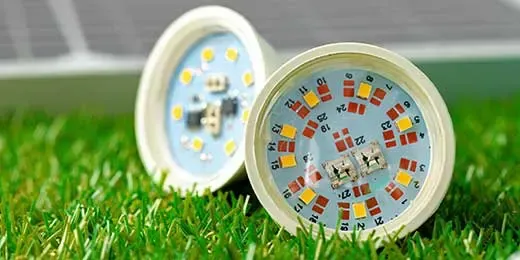Hyundai Motorstudio Senayan Park
Hyundai Motorstudio Senayan Park
Newsroom
The official news from Hyundai Motorstudio Senayan Park and a collection of innovative articles on mobility and sustainability here.
-
4 Simple Steps How to Implement Energy Efficiency
- Hyundai Motorstudio Senayan Park Senayan Park 2022.05.26
-
Energy Efficiency is an effort made with the aim of reducing the amount of energy needed by using equipment or even an energy-related system. For example, home insulation allows the building to use less heating and cooling energy, to achieve and maintain a comfortable temperature.Installing natural fluorescent lamps, LED lamps or skylights can reduce the amount of energy required to achieve the same level of illumination compared to using incandescent lamps. Improvements in energy efficiency are generally achieved by adopting more efficient technologies or production processes or by generally accepted application methods to reduce energy expenditure, one of energy efficiency goal setting.There are many motivations for increasing energy efficiency. Reducing energy use, reducing energy costs and can result in financial savings to consumers if the energy savings do not exceed the additional costs of implementing energy efficient technology applications.
Energy efficiency and renewable energy
Reducing energy use is also seen as a solution to reducing the problem of greenhouse gas emissions. According to the International Energy Agency, increased energy efficiency in buildings, industrial processes and transportation could reduce the world's energy needs by a third by 2050, and could help control greenhouse gas emissions globally.
Energy efficiency and renewable energy are also referred to as the twin pillars of a sustainable energy policy [3] and are a top priority in the sustainable energy hierarchy. In many countries, energy efficiency is also seen to have benefits for national security because it can be used to reduce the rate of energy imports from foreign countries and can slow the rate at which domestic energy resources are depleted.Energy is a basic need of every human being which is mostly met by energy sourced from fossil fuels such as oil, coal and natural gas. However, the presence of fossil fuels used in most power plants is getting depleted and produces carbon dioxide emissions.
The development of sustainable development with the concept of green building creating environmentally friendly and energy efficient buildings can help save the energy crisis. One of the renewable energies that has great potential to be used as a source of electrical energy in Indonesia is solar cells.The aim of the research is to find out an effective solution in the application of solar panels in 2 different types of houses, from the economic aspect, energy efficiency, and efforts to reduce CO2 by using solar panels.The results of the analysis carried out in the next 25 years by comparing the use of solar panel electricity with the use of PLN electricity in a 62 m2 type house can save costs of IDN 172,813,581.13 and can reduce CO2 emissions by 64.23%. and for the type of house 86 m2 can save costs of IDN 255,134,657.60 and can reduce CO2 emissions up to 79.69%.Tips To Reduce AC Use
Currently, electricity rates have increased. If we are not wise in using various electronic devices at home, then it is not surprising that the electricity bill also soars. If you already use smart electricity, the cost to buy electricity tokens that can meet your needs will also increase.One of the electronic devices that suck up a lot of electrical energy is air conditioning or what is commonly referred to as AC. If we don't understand how to use AC correctly, this will cause AC to be the biggest contributor to the number of electricity costs in our homes! Also read: TIPS FOR USING AC - SAVE ELECTRICITY & COSTS.Even so, we need to think of ways so that we can reduce the use of air conditioning in our daily life at home. In Indonesia, global warming’s impact has also been felt. The daily air temperature in Indonesia is already higher than in the previous few years.To reduce our dependence on this one device, we can increase the coolness of the air in the house. Here are some tips for that:1. Air Circulation System
Pay attention to the air circulation system in your home! Make sure the ventilation ducts in your home are sufficient to circulate air properly. This is important to keep the house cool. If possible we need to rearrange this air circulation system. Many books on Feng Shui discuss how to create a good air circulation system for your home.2. Plant
Use plants for added coolness. We know that during the day, plants produce oxygen and absorb carbon dioxide. If we place plants in the right place, then this can support the coolness of the room in the house and also make us healthy. But don't forget to remember that plants absorb oxygen and give off carbon dioxide at night! Do not forget to avoid placing plants in the bedroom at night.3. Room Lighting
Make sure the lighting of the room is bright enough for the room in the house by entering sunlight. It can also improve our health, because sunlight reduces the humidity of the room. If the room is bright enough, then the lights used are also not too many. If you need to use a lamp, avoid lamps that release a lot of heat when they are turned on, such as ordinary incandescent (tungsten) light bulbs. It's time for us to use LED lights that don't release a lot of heat energy and also have low electricity consumption.4. Heat Absorber
Use heat absorbers on your roof! Cover the underside of your roof tile with a special layer of aluminum foil. This can reduce the heat that enters through the top side of the house. If any part of the wall is exposed to the sun all day, use a special insulating coating on the inside of the wall. There are several types of aluminum foil available in the market: single, double and bubble.




